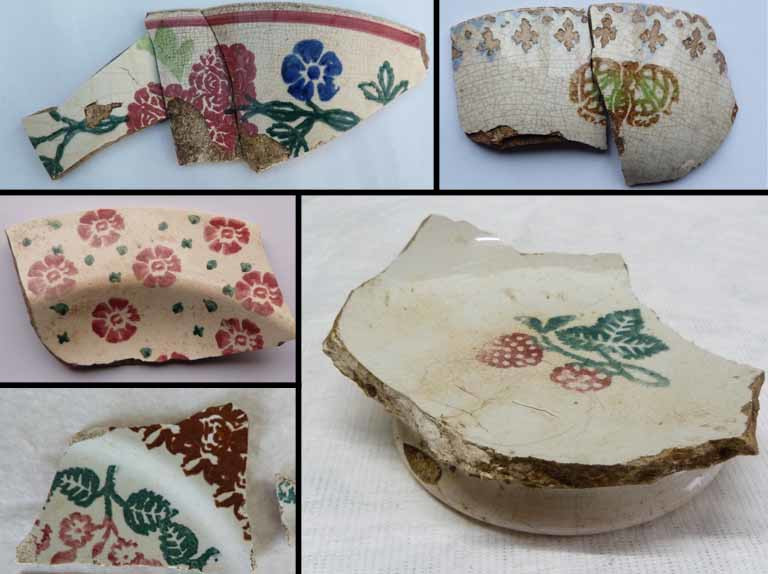Spongeware Pottery
One of the most common archaeological finds here at Auchindrain is spongewear, a type of pottery this is often Scottish in origin and usually dates from between 1835 to 1935. Ranging from plates to bowls to cups, this type of pottery is characterised by its plain background decorated with one or more colours of sponged decoration, creating mottled prints positioned in strong patterns upon the piece.
Although some of the larger pottery manufacturers created spongewear, such as those within Kirkcaldy and Bo’ness, it was a production that was left to fairly unskilled workers and this meant that it was also a great cottage industry, where women would take home blank pieces to decorate before returning them to a factory to fire for a second time. There were three main techniques to create the patterns, which included sponging directly on to the surface, using a stencil, or more commonly using a carved sponge as a stamp. The quick process of sponging meant that it is common to find mistakes in the decoration, including smudges, patterns that don’t line up and gappy areas. Because it was such a quick process, the pottery was cheap to buy and was common in rural homes and farmhouses within Scotland, Wales and Ireland. By about 1870 the designs began to get a little more complicated and the patterns began to reflected country living – at Auchindrain we’ve found butterfly, flower and fruit designs, but cows and even tools such as weavers’ shuttles were common.

For those of you who are self-isolating or children unable to go to school, why not have a go at making your own spongewear using vegetables at home? You can find out how HERE.
If you’re interested in learning more about how spongewear was made, this is a lovely article about a lady called Margaret who worked as a sponger at Bridgeness Pottery in Bo’ness between 1916 to 1927: